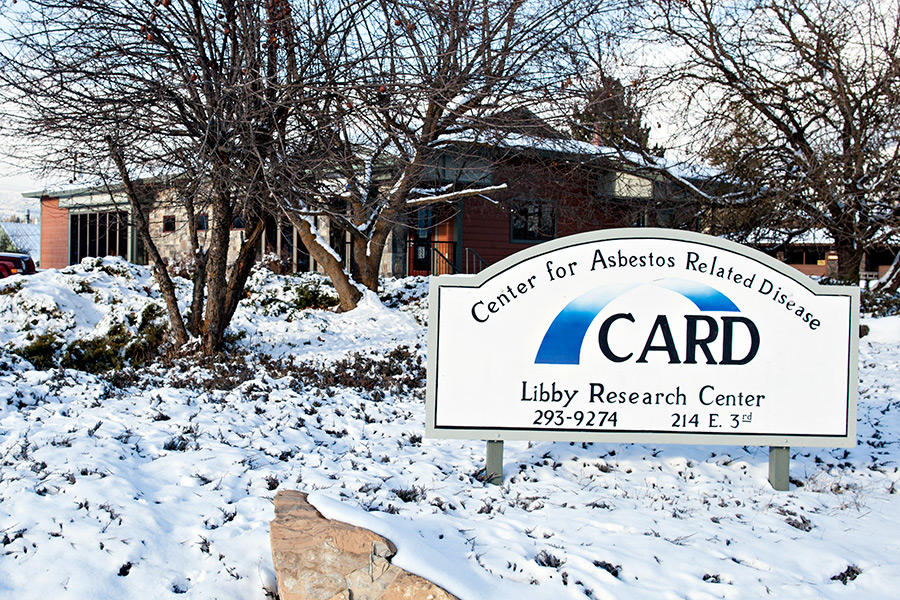The Montana Supreme Court recently appointed six additional Asbestos Claim Court judges to handle thousands of claims pending against dozens of defendants, a bloated docket that until the high court’s decision last month fell on a single jurist’s desktop.
The Asbestos Claims Court was created in November 2017, with the Honorable Amy Eddy, 11th Judicial District in Kalispell, appointed as the judge for pretrial proceedings for the 545 plaintiffs identified at that time, all of them fighting for reparations stemming from asbestos exposure from a now-defunct vermiculite mine in Libby, owned and operated by W.R. Grace, which derailed the cases for years after the company filed for federal bankruptcy.
With the federal procedures over, the clot of cases is coursing through a constricted legal artery, even as the docket continues to swell.
According to the Supreme Court’s Dec. 12 order, there are now 2,229 claimants alleging exposure to asbestos in Libby, with 200 additional cases per year anticipated to be filed for the foreseeable future. Of those, 1,394 cases have been moved onto a deferred docket for people who have an asbestos-related disease but do not currently have functional symptoms. Once they meet established medical criteria, they will be moved to the active docket for their claims to be resolved.
There are currently 835 claimants on the active docket.
Eddy said an additional six judges is barely scratching the surface of what’s needed to efficiently handle the volume, and they’re performing the work without compensation, on a voluntary basis.
“A total of seven judges just isn’t enough with so many hundreds of complex cases based primarily in Northwest Montana,” she said.
The Supreme Court’s order said the additional judges were appointed to more equitably and efficiently meet the demands of the litigation.
The judges appointed are: Judge Matthew Cuffe, 19th Judicial District, Libby; Judge Michael McMahon, 1st Judicial District, Helena; Judge Jon Oldenburg, 10th Judicial District, Lewistown; Judge John Parker, 8th Judicial District, Great Falls; Judge Gregory Pinski, 8th Judicial District, Great Falls; and Judge Dan Wilson, 11th Judicial District, Kalispell.
The pending cases will be divided among the judges, who will preside over the matters through settlement or trial.
The Montana Legislature gave the Supreme Court the authority to establish an asbestos court during the 2001 legislative session. The authority to create an asbestos court came when the scope of Libby’s asbestos contamination was first discovered. Since 2001, Libby and the former W.R. Grace & Co. vermiculite mine has become ground zero for one of the largest environmental cleanups in American history, resulting in a groundswell of civil cases involving toxic exposure, as well as criminal charges against company executives.
Hundreds of people have been killed and thousands sickened following decades of exposure to asbestos from the now-shuttered W.R. Grace and Co. mine in Libby, once the lifeblood of the community as workers filled lucrative jobs mining asbestos-laced vermiculite ore, then carried the dust home on their clothes, exposing themselves and their families to the deadly fibers.
The mine closed in 1990, but more than 2,000 current or former residents of Lincoln County have been diagnosed with asbestos-related diseases, including cancer and mesothelioma, and at least 400 have died in the last decade.
The type of asbestos fibers in Libby aren’t the typical, industry-wide, corkscrew-shaped chrysotile asbestos, but rather the dart-shaped tremolite fibers, which pierce the pleural lining of lungs that inhale it, which then scar over, rendering soft, pink tissue that should be the consistency of a blown-up birthday balloon to the thickness of an orange peel.
Libby was declared an Environmental Protection Agency Superfund site in 2002, becoming one of the largest environmental cleanups in U.S. history.
